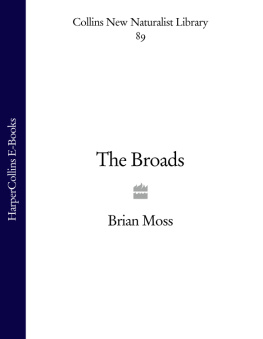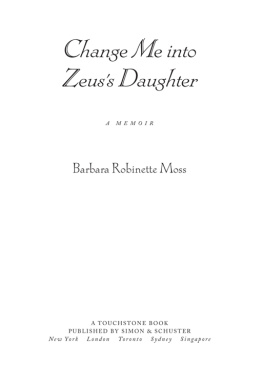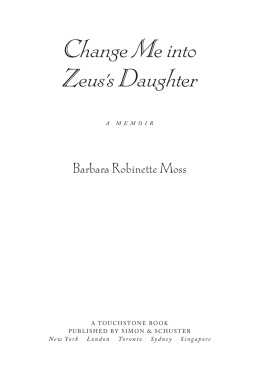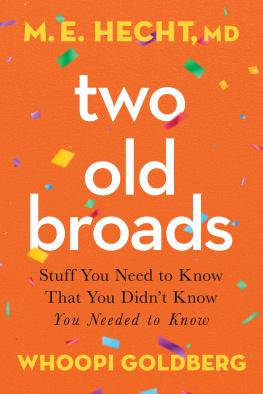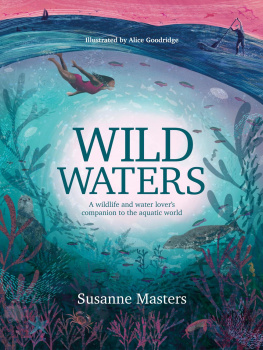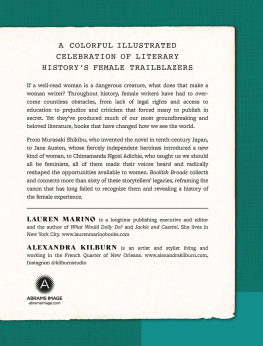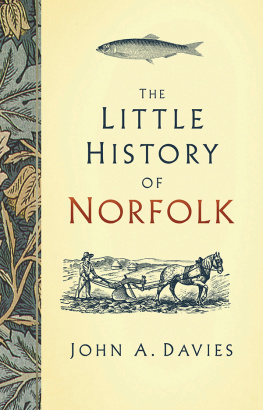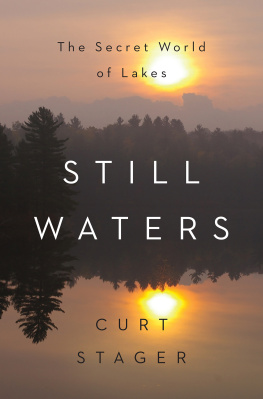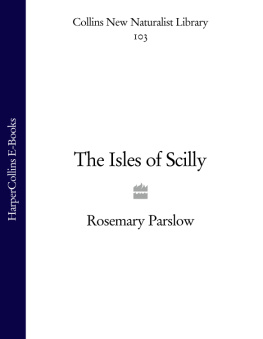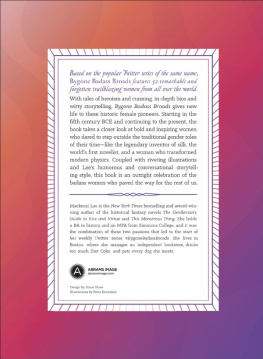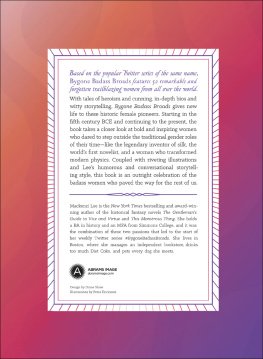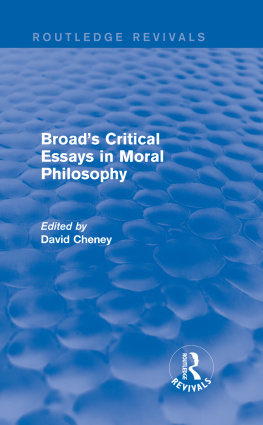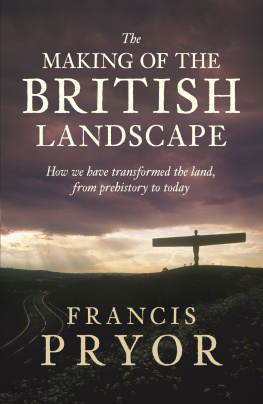Sarah A. Corbet ScD
S.M.Walters, ScD, VMH
Prof. Richard West, ScD, FRS, FGS
David Streeter, FIBiol
Derek A. Ratcliffe
The aim of this series is to interest the general reader in the wildlife of Britain by recapturing the enquiring spirit of the old naturalists. The editors believe that the natural pride of the British public in the native flora and fauna, to which must be added concern for their conservation, is best fostered by maintaining a high standard of accuracy combined with clarity of exposition in presenting the results of modern scientific research.
The Broads of Norfolk and Suffolk have long attracted naturalists by the diversity and interest of the flora and fauna of their wetland habitats. Indeed, their interest stimulated some of the earliest conservation plans and freshwater biology projects. The Broads have also attracted a much wider public by their virtue as an escape from everyday life to a life on water. Add to this the sensitivity of such wetland habitats to the activities of man, and we see the conflicts between conservation, land use, agriculture and tourism. In the earlier New Naturalist of 1965, the doyen of Norfolk naturalists Ted Ellis and his colleagues wrote from their exceptional knowledge of the flora and fauna of the Broads. Much has happened since then in the development of this area, and this book presents a personal approach to these developments, and to the earlier history of Broadland, equally important to the understanding of this remarkable region. The association of historical events with the evolution of Broadland habitats shows in extraordinary detail the sensitive state of the natural history we see today in Broadland, a degree of understanding which is hardly possible in other areas of the British Isles. Much of the recent knowledge comes from the study of freshwater life, the subject of the editions (1951, 1968, 1974) of the New Naturalist Life in Lakes and Rivers, written by T.T. Macan and E.B. Worthington. The present book brings together freshwater biology and conditions, vegetation, fauna and the recent geology into an ecological whole, all against a historical background. The author, Brian Moss, based at the University of East Anglia for many years, has been responsible for much of the new natural history which has enabled the synthesis he describes, a synthesis that is certainly relevant to threatened wetland habitats and their natural history in the wider world. The reader will soon gather and appreciate his enthusiasm and deep knowledge of Broadland natural history and of the social factors affecting its evolution. Those who know the Broads will reap very many new insights, and those who do not will, we are sure, be drawn to the natural history of the Broads by this book.
Writing this book was no chore. My impressionable teens were profitably informed by the classic New Naturalists of Pearsall, Macan & Worthington, Dudley Stamp, Turrill, Russell, Manley and Yonge and I was glad to be invited to join them. They very much celebrated the diversity of British natural history in the spirit in which the series was founded, at a time when they could take it very much for granted. Things are different now. Whereas they could write of man the curious rural inhabitant, I must attend to man the powerful, competitive species in the environment of man the creative and destructive modifier.
You will thus not find here a traditional naturalists book, emphasising lots of species, and delighting in the appearance of this or that flower, or the habits of some spectacular bird. The flowers and the birds do not fail to move me and I indulge myself no less than many ecologists, but there are greater urgencies to which the endlessly fascinating system of Broadland should be harnessed. Nor will you find a habitat looked at through rose-coloured spectacles. I have not set out to rival the authors of coffee-table books, nor to be lauded in glossy magazines. I have deliberately used my own photographs accumulated over the years rather than the professional shots available for marketing the area. I have tried to present what a reader might realistically see.
For 30 years I have thought something about Broadland almost every day. The Broads have been a source of great pleasure, particularly at the end of a successful day coring their sediments, when one returns to the laboratory with the self-satisfaction of the successful hunter bringing home the quarry to an admiring tribe, or on completion of a good scientific paper with an internally consistent underlying theme. They have also been a source of immense frustration, when, for example, it was apparent that one or other organisation concerned with their management appeared to be no more perceptive than a well-trained coal horse lumbering on in blinkers. But then it turned out that they were not lumbering at all, but moving in a direction deliberately decided, that can be interpreted as part of the natural history of organisation man, an important feature to be factored into the story.
I worked on the ecology of the Broads intensively for 17 years and still do so at a distance. I am not a native of the area and hence not inhibited by its hierarchies and sometimes inward emphasis. I am also an academic and enjoy the proper role of academics to say what I think and not what is politically expedient or locally convenient. I hope this is a ruthlessly honest account. Among my heroines is Marion Shoard (1980, 1987). I have few heroes. If you want to know more about what I feel on issues of conservation and science and why I feel as I do, read Moss (1999a, b, 2000). I am not a born naturalist, with a boyhood of pocketed frogs nor a checklist of birds behind me. I come to the area with a broad background of environmental science, with as strong an element of chemistry and geography as of biology, and it is from all of these viewpoints that I have written this book. From the beginning, a study of the Broads epitomised the environmental sciences, which I see as the best grouping to cope with the nature of the future, whatever that might be, by the careful dissection of the past and the interpretation of the present. I am very grateful to the School of Environmental Sciences at the University of East Anglia, Norwich, and its founders, for that revelation.
I have broken several conventions. I have used the term Broadland to cover not only the core area, of National Park Status, administered by the Broads Authority, with its undrained fens, open water and grazing marshes, but to include the catchment area of the rivers also. A significant part of Broadlands problems has been enshrined in a cosy desire on the part of many of its past administrators and inhabitants to huddle into a picturesque enclave and ignore the greater world around of which the core area is just a small part. I have used the term Broads in the text to refer to the lakes, the Broadland floodplain to refer to the core area and Broadland to the whole catchment area.
I have used common names for animals and plants wherever possible in the text, preferring not to clutter it with the Latin scientific names that are the ultimately necessary but immediate esotericisms of professional ecology. This may irritate some readers (it would me), but unless one is very familiar with the scientific names, they can be a distraction. I have given all the scientific names in the index, after the common name. Likewise, I have not given reference in the text to every statement, as this is not a paper in a learned journal. My sources are variously contained in the further reading and in the lengthy reference lists in some of that. I have tried here to tell the story of Broadland as I see it and not to write an encyclopaedia of all the published work on it, let alone all the background of environmental sciences, history and affairs that forms the context for the specifics of Broadland.

